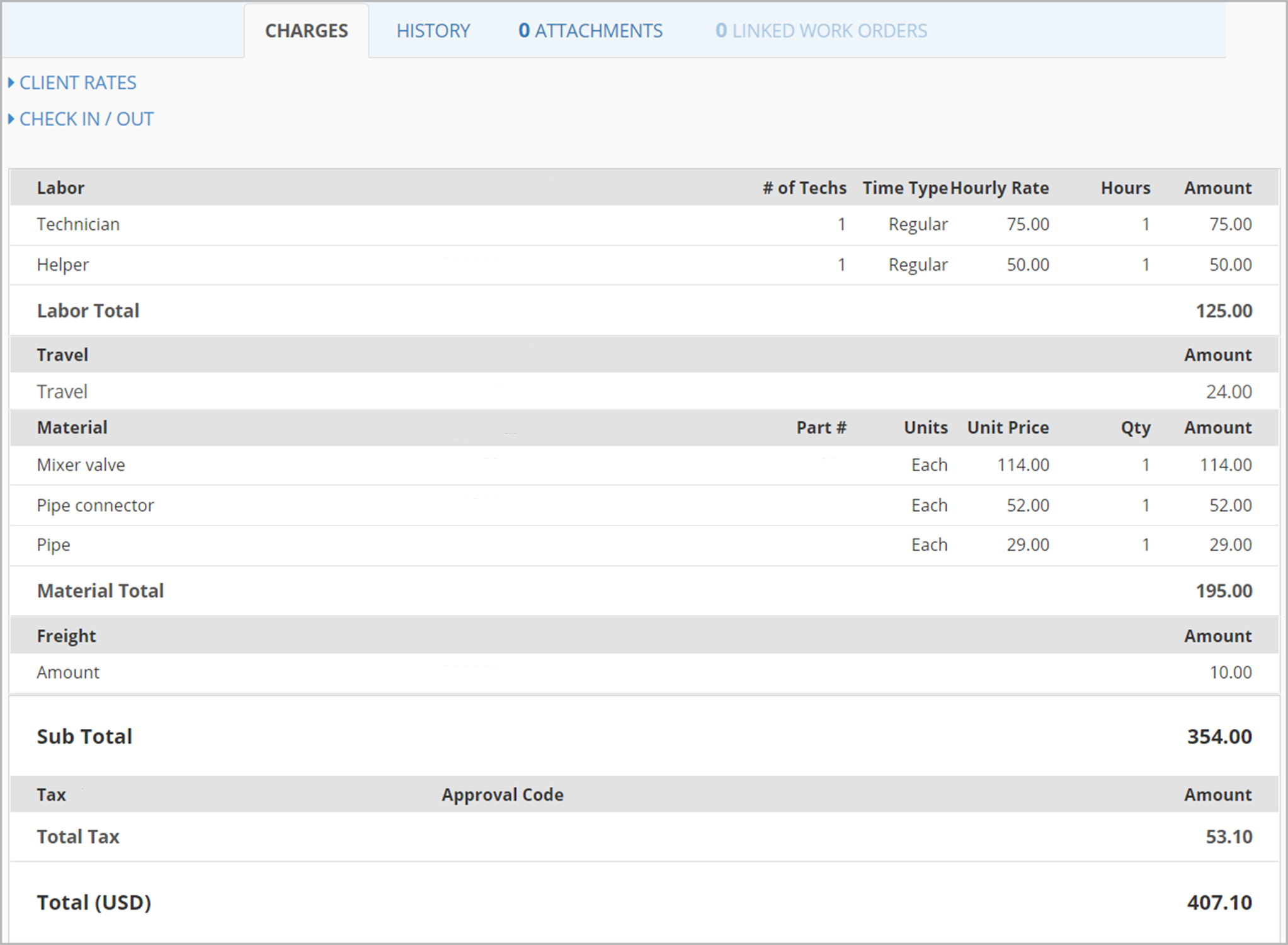- Created by Jing Tong, last modified by Anastasia Medovkina on Mar 25, 2024
You are viewing an old version of this page. View the current version.
Compare with Current View Page History
« Previous Version 54 Current »
When the invoice information in the list view is not enough to get a clear picture, the invoice details page is the right place to go.
- On the top navigation bar, click Invoices. The Invoices List appears.
- Find the required invoice, and click the invoice number.

The invoice details page opens.
When you go to the invoice details page, it gets open with a unique link in the address bar. You may share the link with your colleagues or with permissioned service provider employees to give them quick access to the invoice.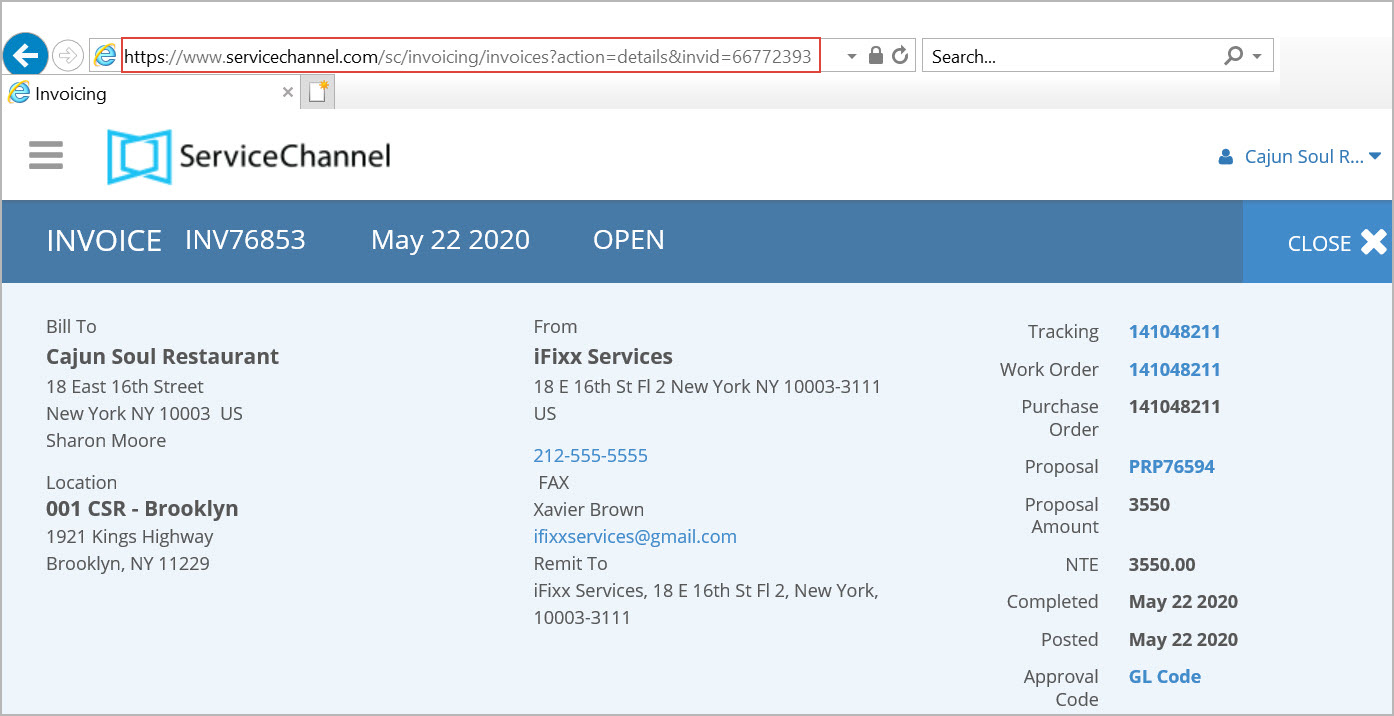
For each invoice, the following information is available in the detailed view:
- Top row. Invoice number, creation date, and status
- Column 1. Billing address of your company and the location where the work was done
- Column 2. Information on the provider who completed the invoiced work order
- Column 3. Work order details, including the tracking, work order, and PO number (displaying up to 50 characters), work order assignee, not-to-exceed (NTE) amount, and date when the work was completed
- Expandable sections. Location notes, WO details, invoice text, etc.
Charges tab. Invoice costs, including labor, material, freight, travel, and other expenses
Should you need to change the decimal point (.) to decimal comma (,) on monetary amounts, contact your ServiceChannel representative.
- History tab. Invoice approval, proposal, error and exclusion, transfer, and payment history
- Attachments tab. Files attached to the invoice
- Linked Work Orders tab. Work orders linked to the current invoiced work order
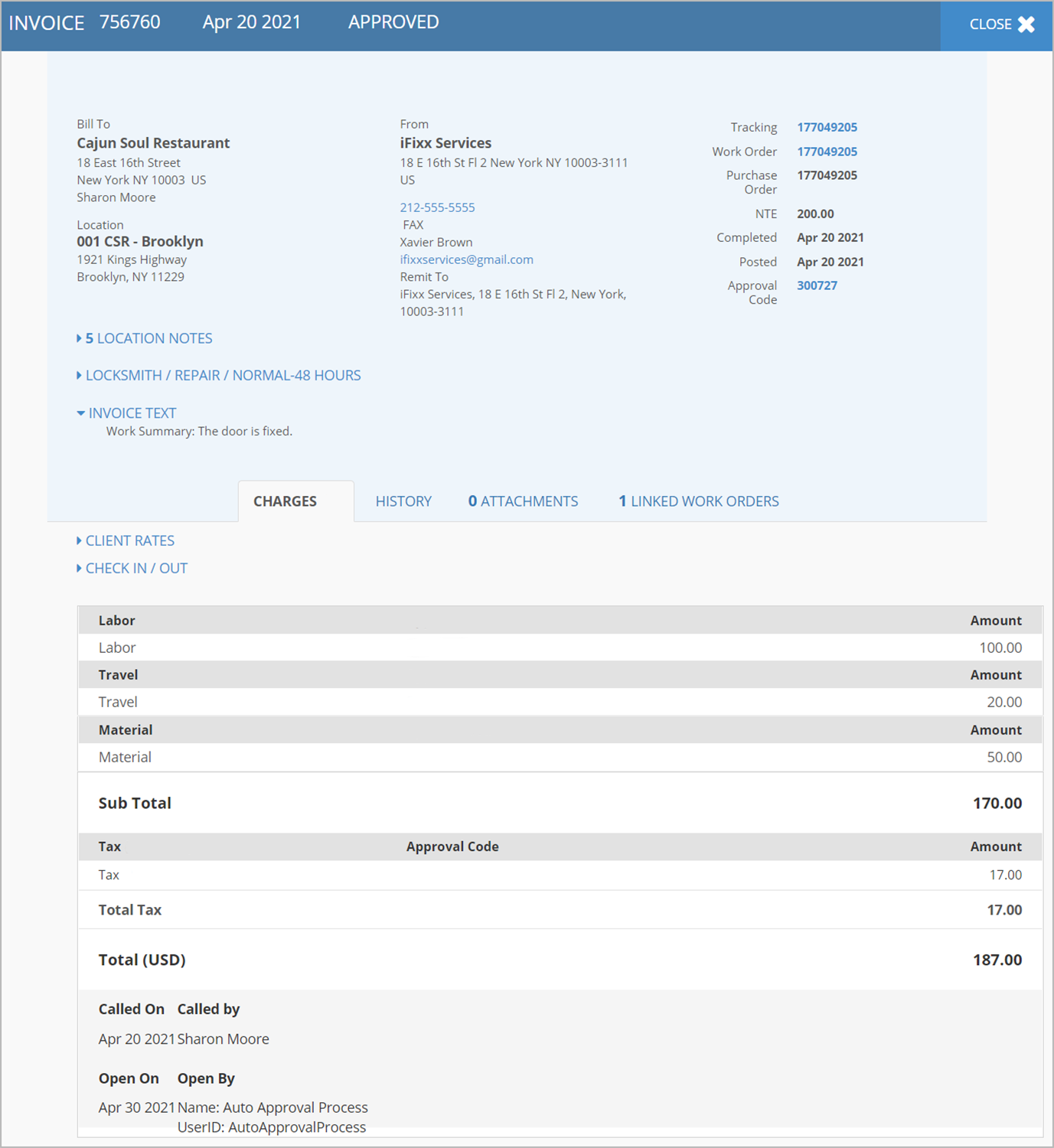
Invoice Statuses
Invoices can have one of the following statuses:
- Open. The invoice has been submitted by the provider and is waiting for your review.
- Reviewed. When your company has multiple levels of invoice approvers, the invoice remains in this status from the time the first person approves the invoice until the final person approves or rejects the invoice.
- Approved. The invoice has been reviewed and approved by you or one of your colleagues.
- Rejected. The invoice costs and details are not agreed upon. The service provider may need to resubmit the invoice.
- Paid. The invoice has been paid by your company. This status is available if you use the Payment Manager module.
- On Hold. The invoice requires further review before any action can be taken.
- Disputed. On the invoice, the entered tax does not match the system validation. This status is available if you have the Tax Validation module.
Types of Invoices
In Service Automation, there are two types of invoices: a Standard Invoice and a Line Item Invoice. Depending on your system configuration, providers create either a Standard Invoice or a Line Item Invoice.
Each invoice type has 2 expandable sections that allow you to check the agreed client rates and technicians’ check-in/out information:
- Client Rates. The section contains information about labor charges you configure, using client rates, and the material costs and markups agreed via negotiated price lists. If there is a rate mismatch between the agreed item and the one entered by your provider, you will see a Warning icon.

Please, contact your ServiceChannel representative should you need to change the decimal point (.) to decimal comma (,) on non-monetary amounts, such as:
- Hours and Duration
- Quantity Amounts
- Weight.

Check-In/Out. This section displays a technician’s work date, check-in/out information, GPS / IVR status, number of technicians on location, and time spent on site. It gives comprehensive information on whether your provider’s technicians are paid correctly.

The GPS / IVR Status column indicates if a technician checked in/out within the allowed radius specified in the Site Access Rules:
- If a check-in and check-out have been performed on-site, you will see the Compliant status.
- If the status is Non-Compliant, you will see how far
a technician was from the location. - If you do not have GPS coordinates or location addresses set up, the status will be Non-Compliant (Unknown).
If invoiced labor hours do not coincide with actual hours, you will see a Warning note below the CHECK IN / CHECK OUT section.

Contact your ServiceChannel manager to enable the feature.
Standard Invoice
A Standard Invoice reflects total labor, travel, material, freight, and other charges. It does not, however, break down any costs into line items.

Line Item Invoice
A line item invoice shows all provider charges, including itemized labor, travel, material, and other costs.
The Invoice Details can show:
- Itemized charges with the exact prices
- GL and Additional Approval Codes
- Price mismatch and its reasons
Depending on your company system configuration, you can prompt your providers to break down not only labor and material costs but also travel, other, and freight charges. Reach out to your ServiceChannel representative to itemize charges.
Line Item Charges
Labor Charges
When labor costs are broken down into line items, you see how many employees worked on your service request, their skill levels, hourly rates, time spent on work completion, and other information.
You can set up client rates to view the types of items and discrepancies between the agreed labor price and the actual price.
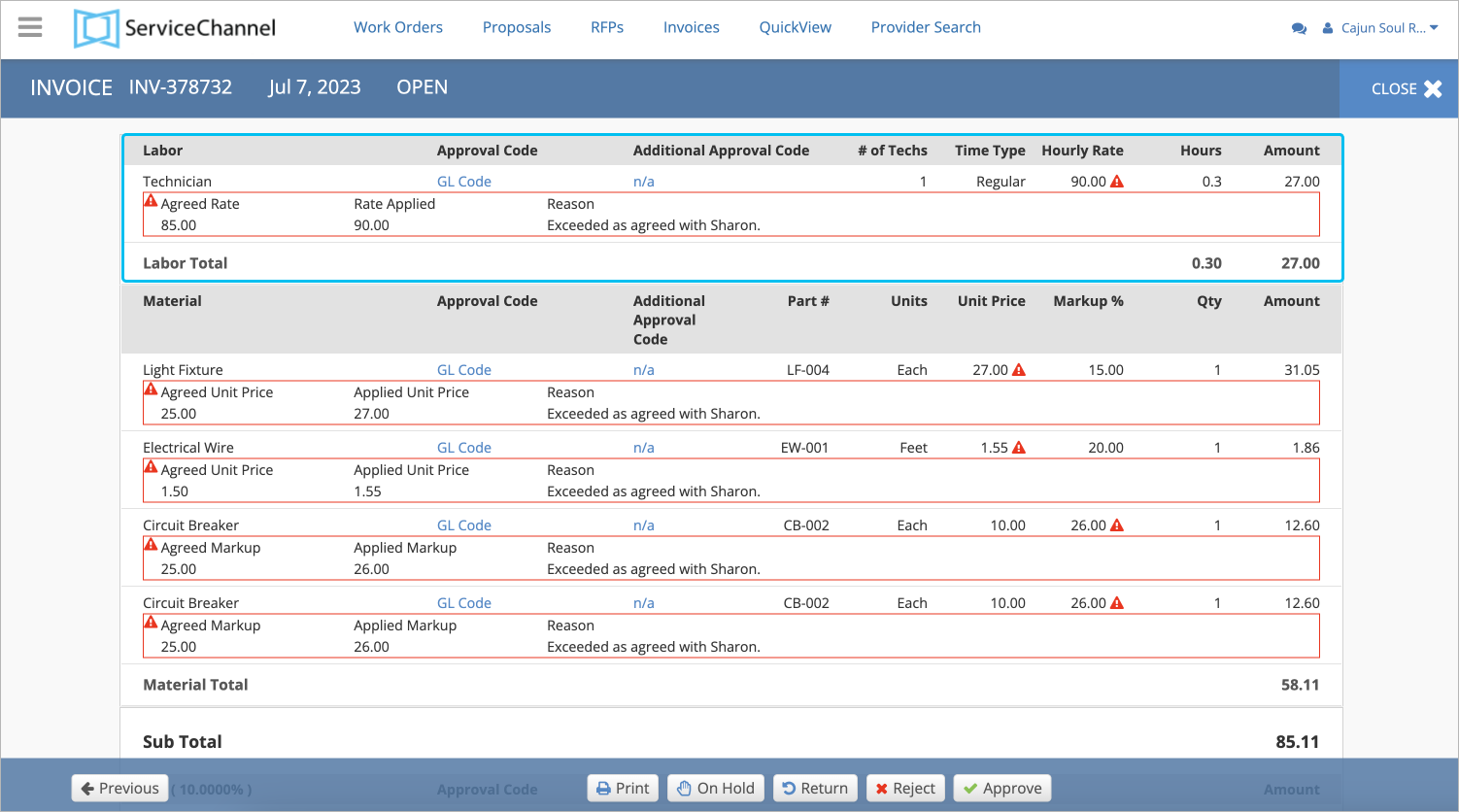
Contact your ServiceChannel manager to enable labor rates.
Travel and Freight Charges
When travel charges are itemized, you can see the item description, the price for each unit, and the total travel charges. The same goes for itemized freight charges.
Material Charges
In the Material section, you can see a detailed list of the materials used, including their quantity, price, and part number.
You can set up a negotiated price list to view part names and markup % for each material item and discrepancies between the negotiated price and actual price, negotiated markup % and the actual one.
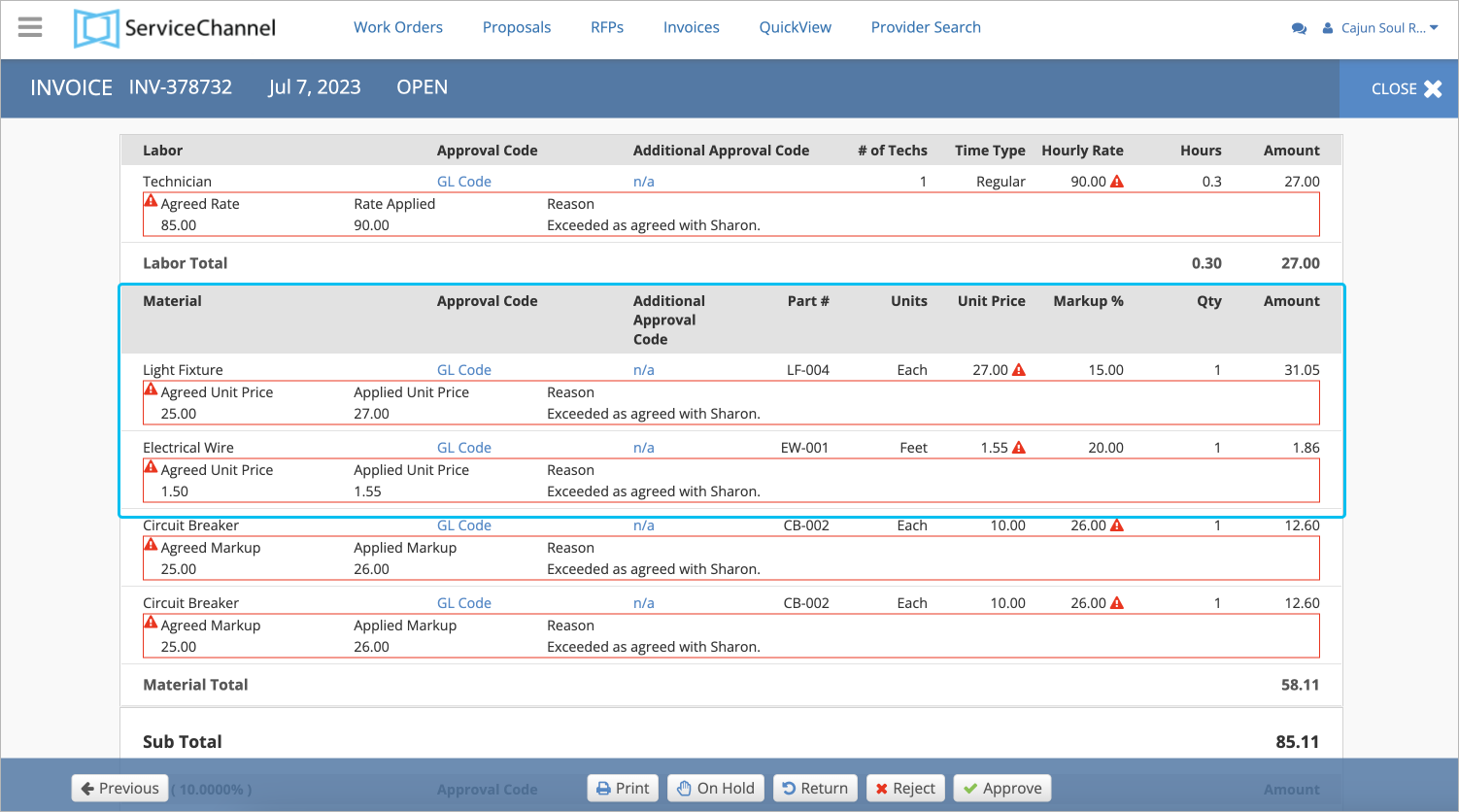
Contact your ServiceChannel manager to enable price lists.
Other Charges
These charges consist of the item description, the price for each unit and the total amount of the section.
You can set up a negotiated price list to view the types of items and discrepancies between the negotiated and actual prices.
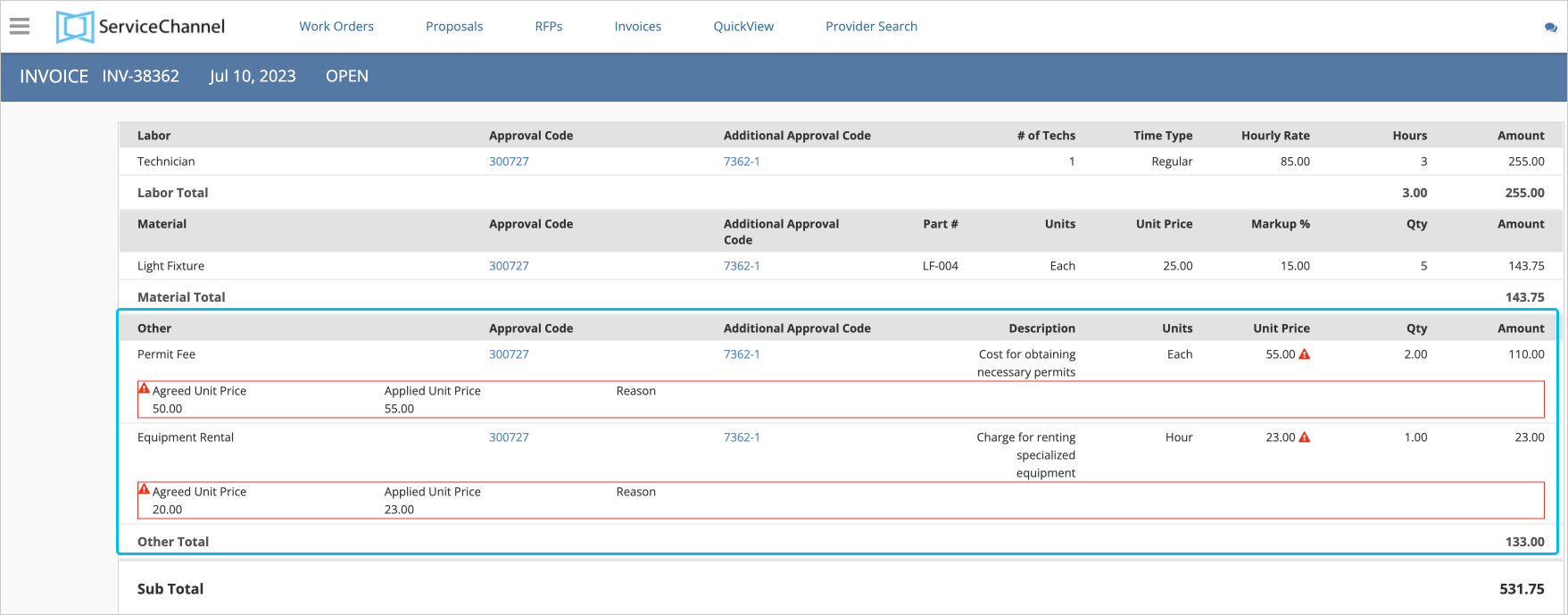
Contact your ServiceChannel manager to enable price lists.
GL and Additional Approval Codes
GL codes and additional approval codes help you identify financial processes. These indicators can be changed depending on your configuration.
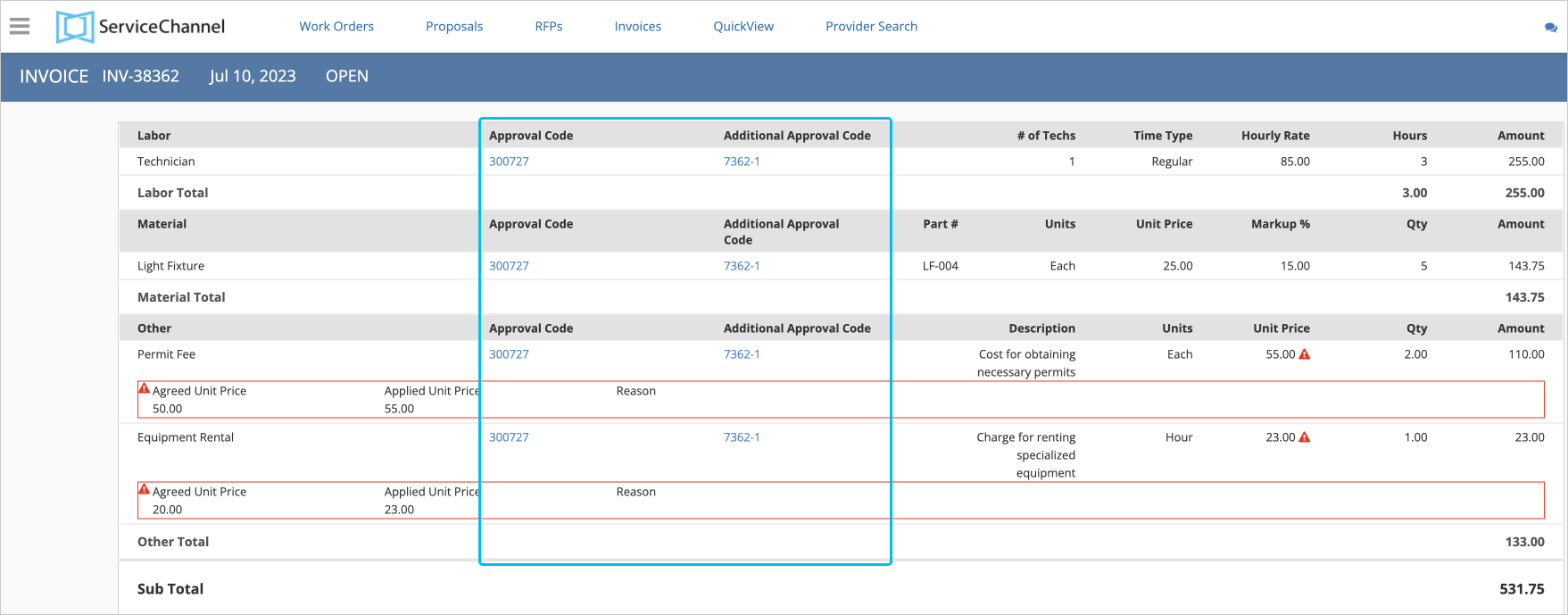
Contact your ServiceChannel manager to be able to view and change codes on the Invoice Details page.
Mismatch and Reasons for Mismatch
You may notice the Warning![]() icon next to one of the sections: labor, material, and other charges.
icon next to one of the sections: labor, material, and other charges.
It indicates that the invoice went through validation, and there are discrepancies between the agreed and actual prices for labor, material, or other charges, the agreed markup % and the actual one. Next to them, you can see the reasons for the price mismatch.
Contact your ServiceChannel manager to be able to view invoice mismatches and the reasons for them.
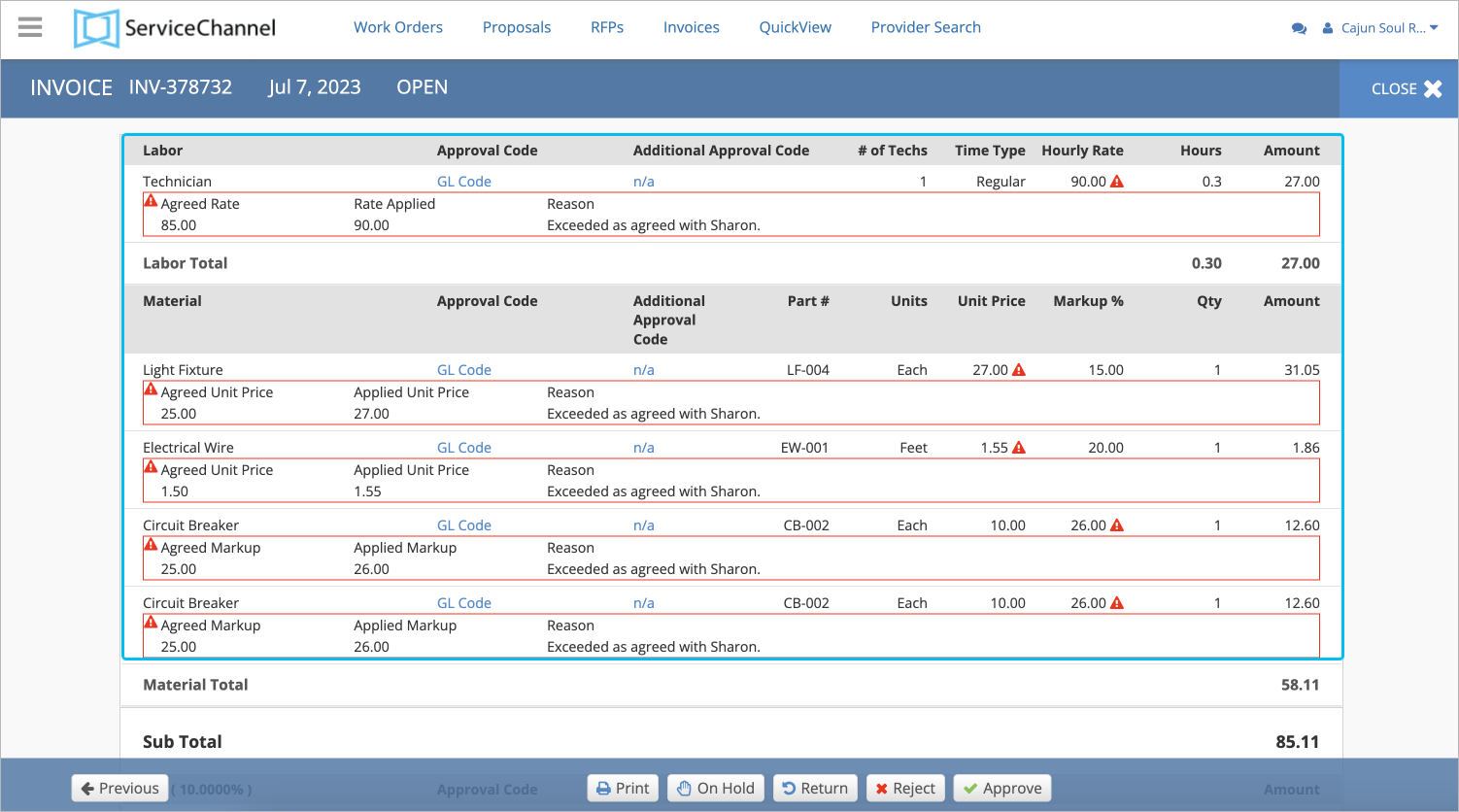
The validation depends on whether you have the agreed client rates or/and negotiated price lists with your provider.
You can check the list of agreed prices in the Client Rates section. For more information about validation, read About Invoiced Rates Validation.
Invoice Attachments
You can view documents, images, and other files attached to the invoice. They may include receipts, contracts, warranty documents, original invoice copies, and other relevant information.
When you need a digital copy of the original provider’s invoice to meet your local requirements, we recommend using the invoice digital copy feature of ServiceChannel.
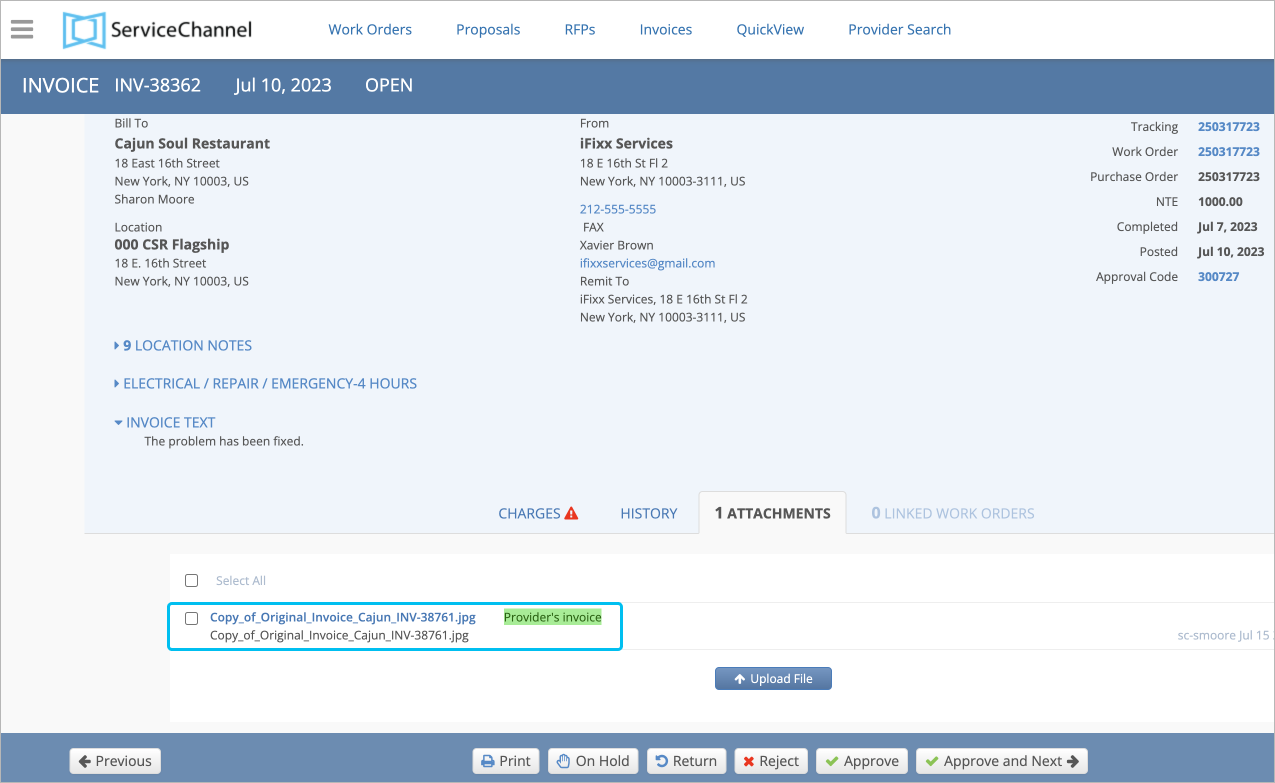
With the feature, you can select which providers should attach the document to the ServiceChannel invoice. For more information, read About Provider Digital Invoice Copy.
Transferred Invoices
A transferred invoice is an approved invoice that has been sent to your company's accounting department for payment. Both Standard and Line Item Invoices can be transferred invoices.
When configured, all approved invoices are combined into one file. This can be done once a day, a week, or a month. The file is then sent to your company's accounting department for payment. All invoices included in that file are transferred invoices.
In Service Automation, transferred invoices are marked with a special icon that is displayed both on the Invoices List and on the invoice details page. Use the tabs below to see where to look for this icon on the mentioned pages.
![]()
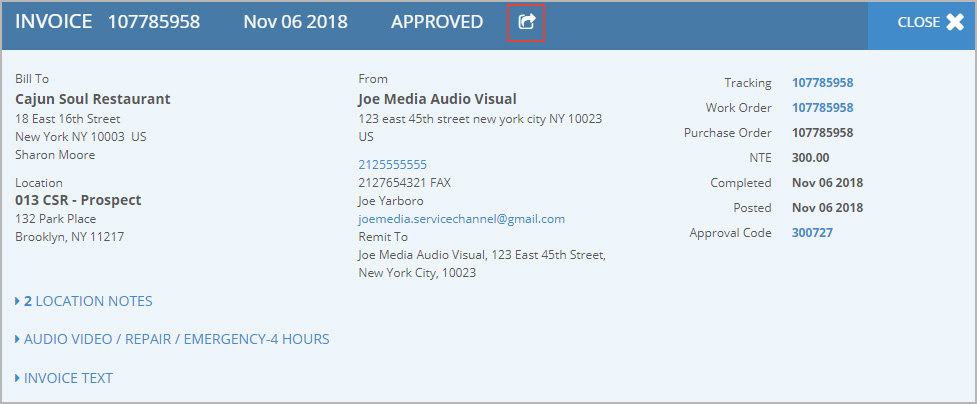
Additionally, when you go to the History tab on the invoice details page, you can check the Transfer History details — in particular, the date when this invoice was transferred to the accounting department.

-
Page:
-
Page:
-
Page:
-
Page:
-
Page:
-
Page:
-
Page:
-
Page:
-
Page:
-
Page:
-
Page:
-
Page:
-
Page:
-
Page:
-
Page:
- No labels
